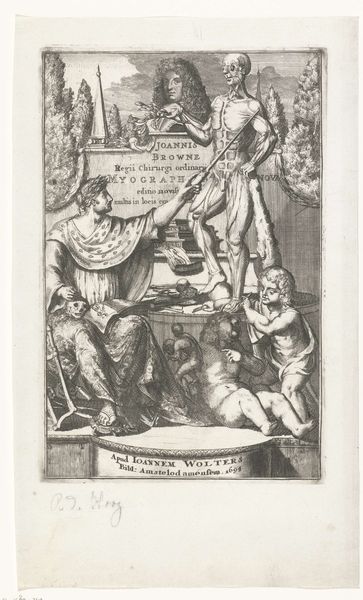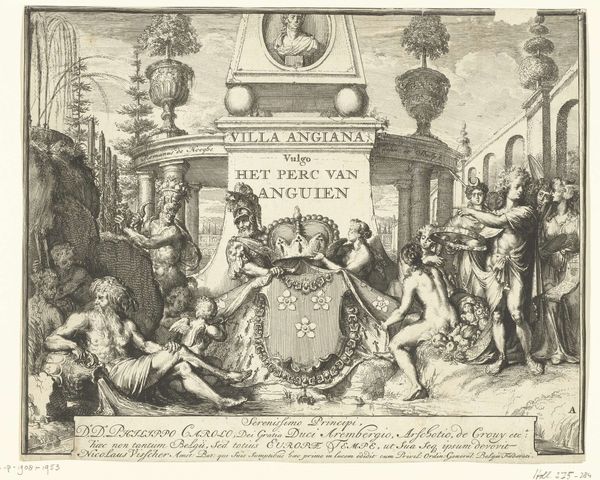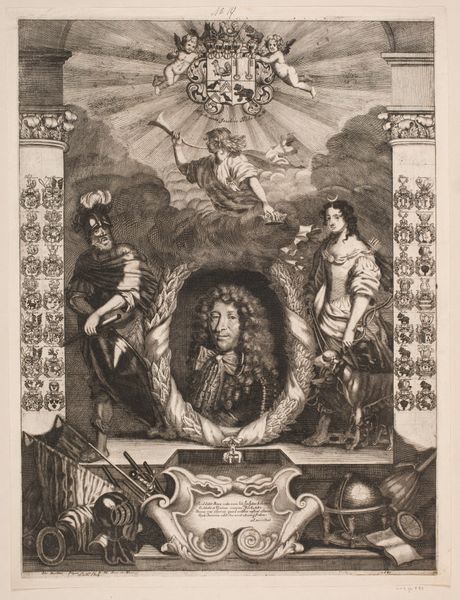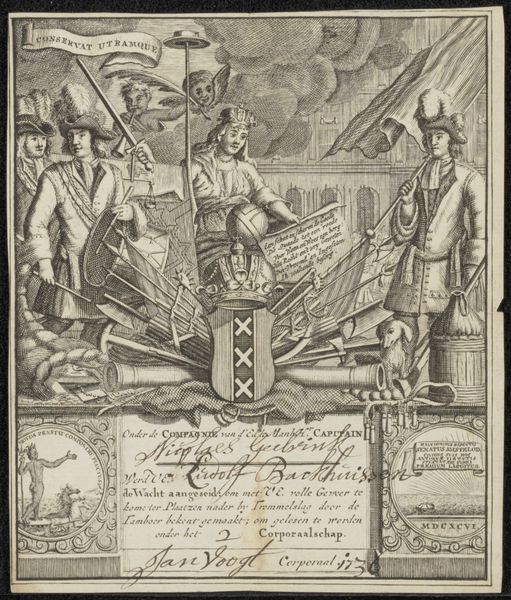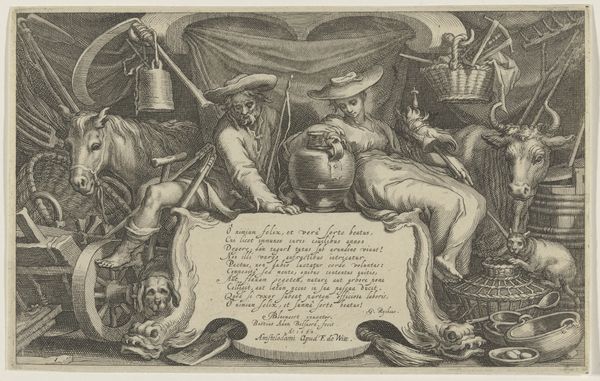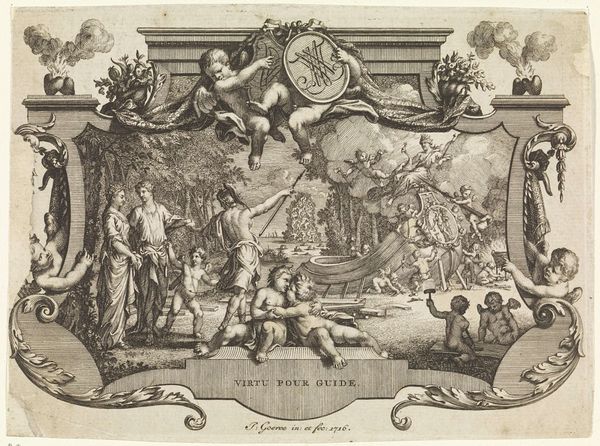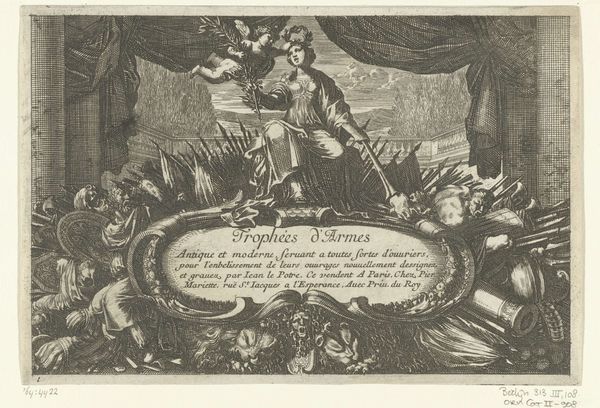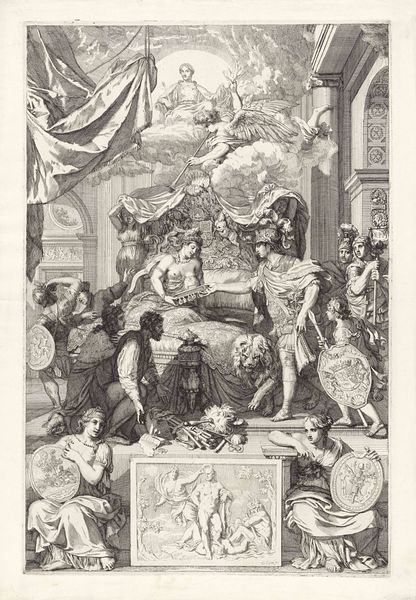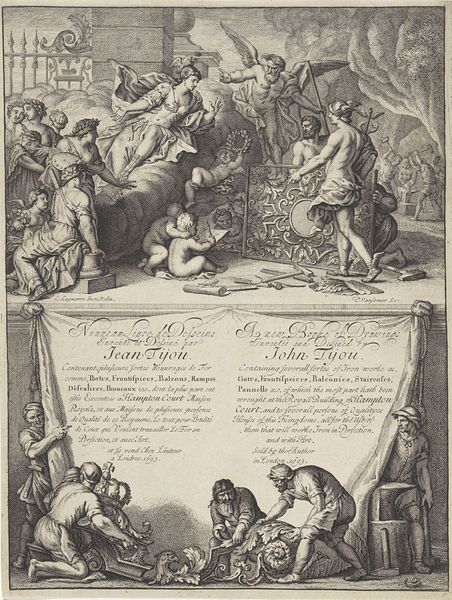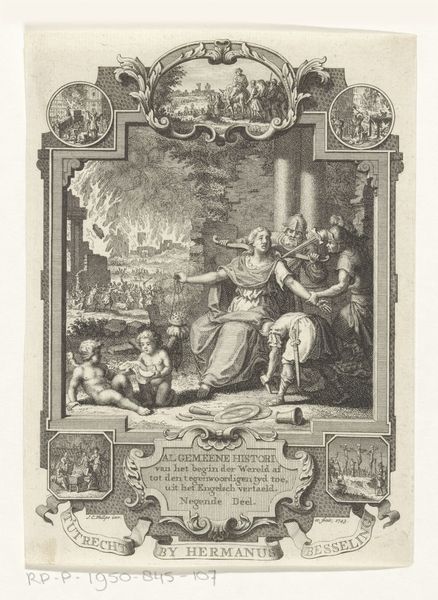
Oproep voor het betrekken van de wacht bij de schutterij van Amsterdam door Jacob Guillot 1716 - 1761
0:00
0:00
print, engraving
#
baroque
# print
#
pen illustration
#
old engraving style
#
group-portraits
#
cityscape
#
history-painting
#
engraving
Dimensions: height 189 mm, width 156 mm
Copyright: Rijks Museum: Open Domain
Editor: Here we have "Oproep voor het betrekken van de wacht bij de schutterij van Amsterdam door Jacob Guillot", made sometime between 1716 and 1761. It’s an engraving. I'm immediately struck by how the artist uses classical allegories to talk about…Amsterdam’s Civic Guard? What should we make of this juxtaposition? Curator: That contrast is exactly where the power of this piece resides. What we're seeing is the artist, Pieter Tanjé, leveraging the visual language of power – classical imagery – to elevate, even perhaps subtly critique, the role of the Amsterdam militia. But who gets to claim that visual language, and what are they using it for? Editor: So it’s a claim to power through visual rhetoric? But the figures seem...almost satirical in their idealization. Curator: Precisely! Consider the context. The Dutch Republic, despite its mercantile power, was often caught between wanting to project strength and needing to justify its relatively egalitarian, burgher-led society. The militia was crucial, yet also a potential site of social tension. By invoking classical heroism, Tanjé flirts with glorifying military power. Ask yourself, though: whom does such idealization truly serve, and what does it conceal about the realities of civic duty and perhaps even social inequality at the time? Editor: It’s like they’re trying to legitimize the Guard through art while almost questioning the very idea of military glorification... Curator: Exactly! We can read this piece as engaging in the complex interplay between power, identity, and representation in 18th century Amsterdam, particularly around militarism and civic identity. It really invites us to question whose voices get amplified in historical narratives. Editor: I see that it's an image that makes the viewer think about society back then, not just the people. I hadn't looked at it that way before!
Comments
No comments
Be the first to comment and join the conversation on the ultimate creative platform.
